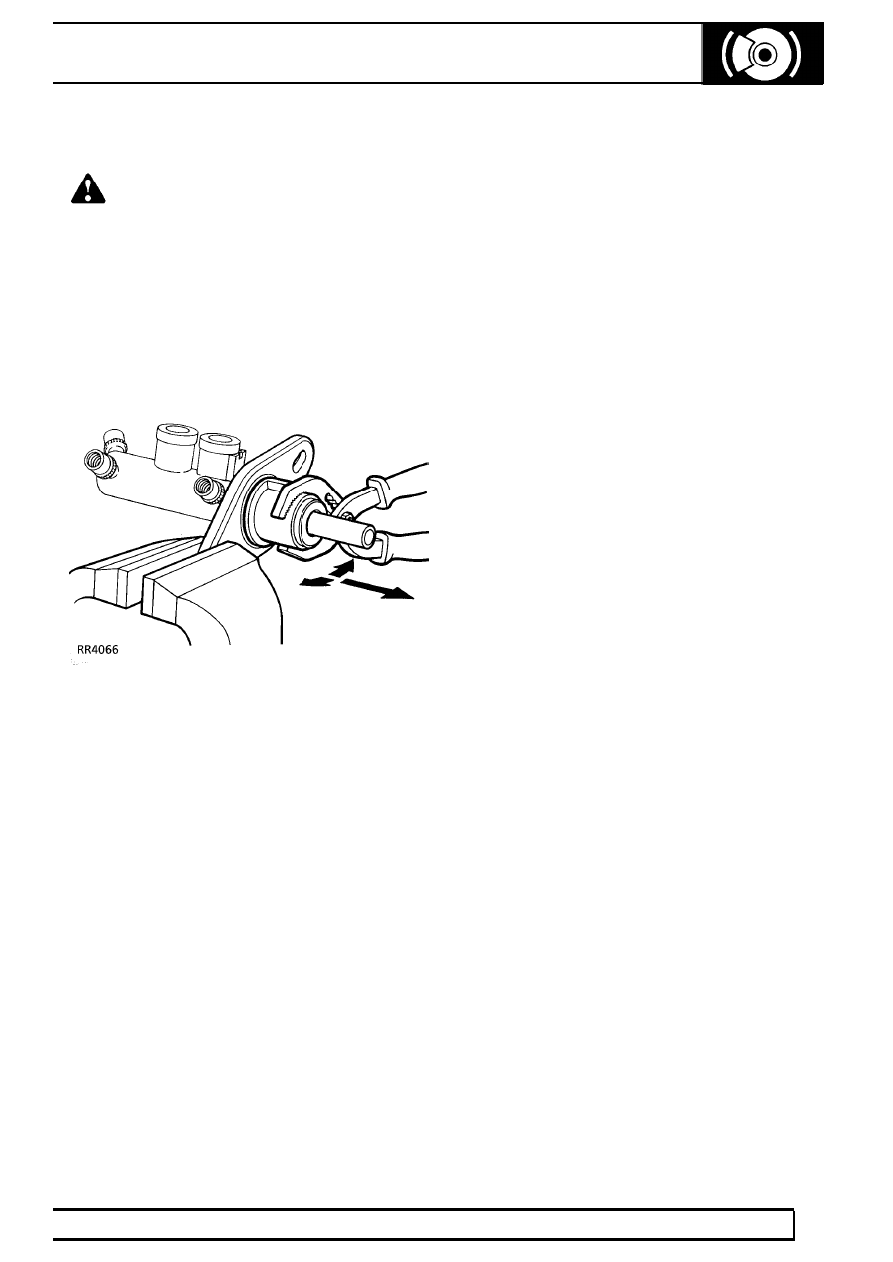Range Rover Classic. Manual - part 124

BRAKES
3
REPAIR
Repair
WARNING: Use only unused brake fluid to
clean any part of brake system. DO NOT
use petrol, kerosene or other mineral
based fluids.
7. Thoroughly clean master cylinder and inspect
outer surfaces for damage and condition, renew
complete assembly if necessary.
8. Using two soft jaws, clamp master cylinder
flange in a suitable vice. Remove water ingress
’O’ ring seal from master cylinder to servo flange
and discard.
9. Grip outside of transfer housing with a suitable
pair of pliers, carefully pull, working pliers in a
backwards and forwards rocking motion to ease
housing off master cylinder. Discard housing and
vacuum seal.